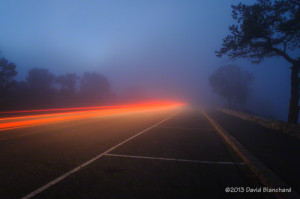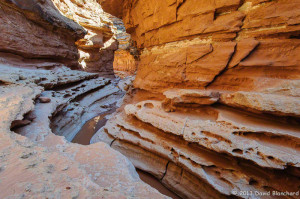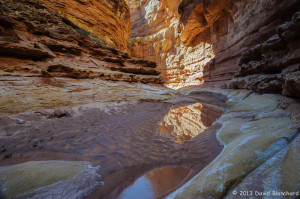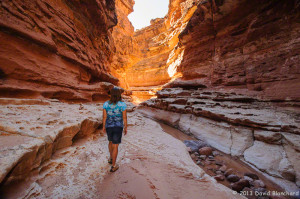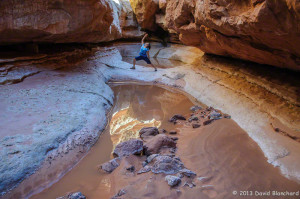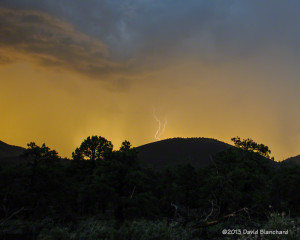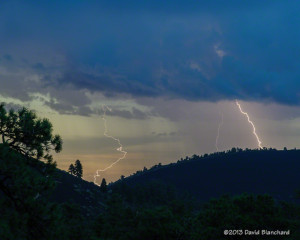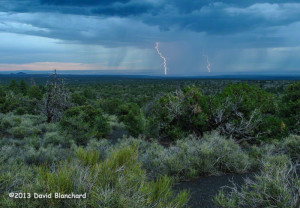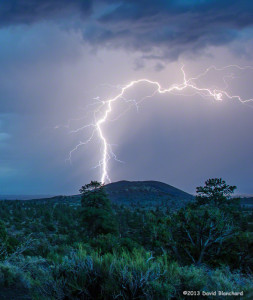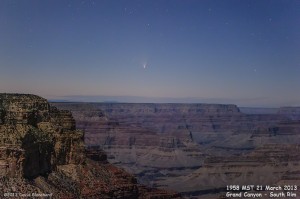We woke up to a foggy morning in Flagstaff and a quick check of satellite data clearly showed widespread fog across northeastern Arizona but not across the remainder of the state. We quickly broke out of the fog and into sunny skies as we drove south of the Mogollon Rim for a trail run with our running group.
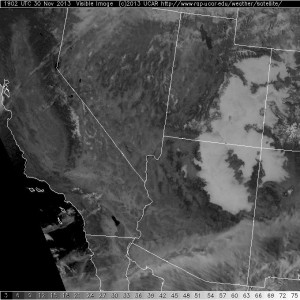
Intrigued by the fog, I traveled to the Grand Canyon in the late afternoon in hopes of getting some interesting photographs. At Yavapai Point on the South Rim there were few visitors. After all, who wants to see a canyon filled with fog! Visibility was on the order of a hundred meters or less and driving was an interesting challenge.
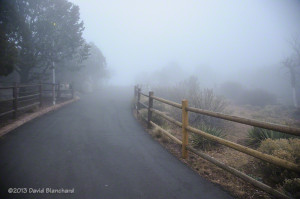
Leaving Yavapai Point, I drove east on the Rim Drive to the first pullout. Moments later, the fog briefly cleared and I could see the North Rim above the top of the fog. Then, just as quickly, it filled back in. A short while later, this clearing repeated itself. This time I captured an image that shows a vast expanse of fog filling the canyon and the North Rim just barely peeking above the fog.
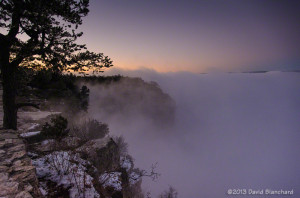
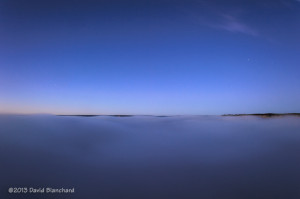
Then it was time for some fun. I set the camera to take long exposures and shot a photo every time a car drove by. The red streaks of the vehicle tail lights and the fog being illuminated by the lights created interesting images.
